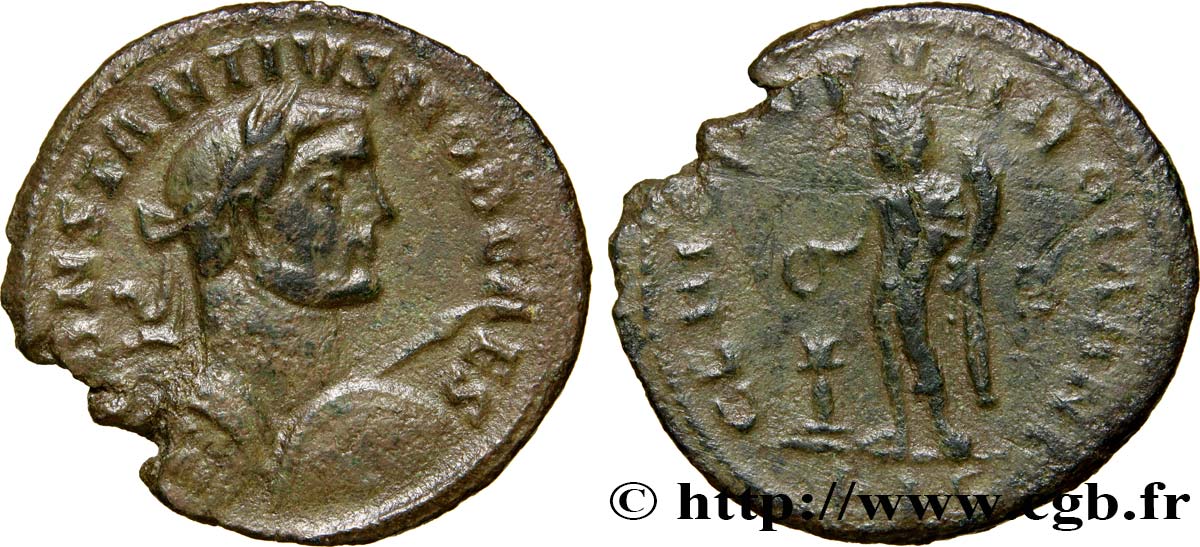Live auction - brm_403333 - CONSTANTIUS I Follis ou nummus
You must signin and be an approved bidder to bid, LOGIN TO BID. Accounts are subject to approval and the approval process takes place within 48 hours. Do not wait until the day a sale closes to register. Clicking on "BID" constitutes acceptance of the terms of use of cgb.fr private live auctions.
Bids must be placed in whole Euro amounts only. The sale will start closing at the time stated on the item description; any bids received at the site after the closing time will not be executed. Transmission times may vary and bids could be rejected if you wait until the last second. For further information check the Live auction FAQ
All winning bids are subject to a 18% buyer’s fee.
All winning bids are subject to a 18% buyer’s fee.
| Estimate : | 700 € |
| Price : | 350 € |
| Maximum bid : | 500 € |
| End of the sale : | 27 September 2016 14:57:47 |
| bidders : | 1 bidder |
Type : Follis ou nummus
Date: 302 - mi 304
Date: 300 - mi 304
Mint name / Town : Lyon
Metal : copper
Diameter : 27 mm
Orientation dies : 6 h.
Weight : 7,96 g.
Rarity : R2
Officine: 2e
Coments on the condition:
Exemplaire sur un flan bien centré avec le métal échancré entre 7 et 8 heures au droit. Portrait tout à fait exceptionnel. Revers de frappe un peu molle. Patine vert foncé
Catalogue references :
Obverse
Obverse legend : CONSTANTIVS NOB CAES.
Obverse description : Buste lauré et cuirassé de Constance Ier césar à droite, vu de trois quarts en avant avec une haste en avant, un bouclier sur l’épaule gauche (F*14).
Obverse translation : “Constantius Nobilissimus Cæsar”, (Constance très noble césar).
Reverse
Reverse legend : GENIO POP-VLI ROMANI/ (AUTEL)|B// PLG.
Reverse description : Genius (Génie) debout à gauche, coiffé du modius, le manteau sur l'épaule gauche, tenant une patère de la main droite et une corne d'abondance de la main gauche.
Reverse translation : “Genio Populi Romani”, (Au Génie du Peuple romain).
Commentary
Type que nous présentons pour la première fois à la vente ! Même coin de droit que l’exemplaire d’Oxford (B. 214, pl. XX). C’est le deuxième exemplaire signalé.








 Report a mistake
Report a mistake Print the page
Print the page Share my selection
Share my selection Ask a question
Ask a question Consign / sell
Consign / sell
 Full data
Full data














